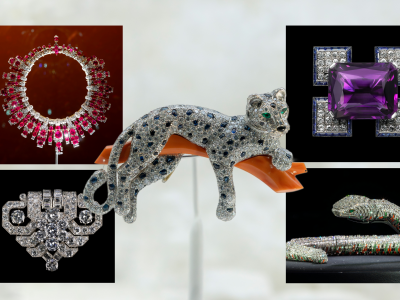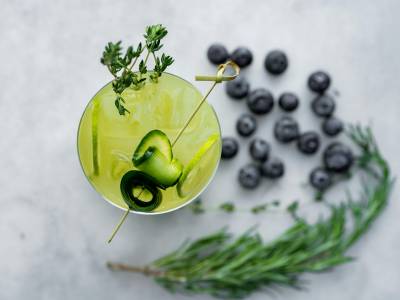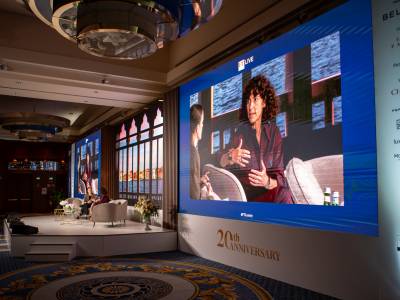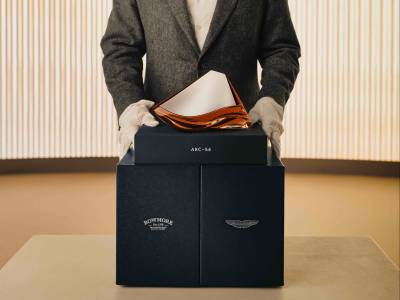Luxury’s very essence is centred around tradition, heritage and conservatism — yet the sector is in constant churn. This trend is accelerating, especially with the continuing economic and political uncertainty and the aftermath of lockdown. At the same time, technology is challenging long-standing business models and marketing strategies, while new industry initiatives are helping to identify, cultivate and fund the next generation of luxury designers.
Some of the most exciting names have made their own way into the industry, while others are from BAME backgrounds, and many are challenging traditional views of luxurious womenswear and menswear.
Bianca Saunders, for instance, sees her collections as “addressing the tension between tradition and modernity, between the masculine and the feminine.” She draws on her British and Jamaican backgrounds to create a look that touches on the traditions of men’s tailoring — think suit jackets, long coats and elegantly cut trousers — which she blends with the colours and detailing of urban streetwear.’
Her AW22 collection is all about loose, generous cuts and flowing forms that move easily with the wearer. Saunders has collaborated with a range of black creatives, including model and poet Jess Cole, stylist Matt Holmes and filmmaker Akinola Davies.
Daniel W Fletcher, who numbers Harry Styles among his fans, plays with concepts of masculinity and luxury in his collections. Having worked for Louis Vuitton, Lanvin and Burberry, his own label is all about challenging traditional menswear by taking items such as rugby shirts and giving them an androgynous twist with bright colours and feminine detailing.
However, Fletcher, an LVMH prize nominee, is not afraid to address controversial issues. He has created pieces that attack Brexit and highlight the pricing of local people out of their traditional neighbourhoods — Peckham in particular. His spring/summer collection features oversized jackets in fine check or large squares, while for autumn/winter the look has long, block-print scarves and patent leather jackets with a ’70s retro feel.
The winner of the 2021 LVMH prize is Nensi Dojaka, an Albanian womenswear designer based in London. Famed for her little black dresses, Dojaka’s pieces exude glamour and sophistication, while their straps, cutaways and sheer lines add an element of eroticism. Continuing this theme, her latest eveningwear celebrates the female form and appeals to young, affluent women who want to consign lockdown to the bin of history.
The well-established luxury brands are also not standing still. Following their belated but enthusiastic embrace of -commerce, they’re looking at new channels where they can not only sell to customers, but also engage with them. Keen not to be caught on the back foot, brands are diving into the metaverse. This year Gucci will develop its presence in this exciting — or scary — new world, following its recent acquisition of a plot of ‘digital land’ in The Sandbox, a virtual world where creators can design, share and sell real world assets as well as playing games.
Gucci is creating experiences in addition to releasing fashion items for Sandbox players to buy and wear in the game’s virtual reality world. “For a new generation of players, virtual fashion is as important as real-life fashion,” says Sebastien Borget, chief operating officer and co-founder of The Sandbox.
“More luxury brands will become ‘phygital’ as they seek to merge digital and physical experiences for their customers as they emerge out of the pandemic’s restrictions,” says Melanie Larsen, a strategist at consumer trend forecasting consultancy WGSN Insight. She points to Chanel’s new Atelier Beauté pop-up at SXSW, a collection of film, interactive media and music festivals. Balenciaga released its AW2021/22 collection in the form of a video game set in a city of 2031, where players mix with avatars wearing oversized high-vis jackets and striking statement parkas.
The Dematerialised is a start-up that sells virtual luxury clothing and accessories. “Our experimental yet empathic approach towards digital fashion assets aims to challenge the traditional fashion business models of production, consumption and ownership with a more transparent, efficient and equitable approach,” says the company’s own description. Its virtual products are released, as is so often the case with their physical counterparts, in limited editions, in this case never more than 150 units.
Back in the real world, everyone likes a surprise gift — at least that’s the assumption underlying a $5m investment made earlier this year by Luxury Ventures, LVHM’s venture capital arm, among others, in Heat, a new service that offers subscribers a box with filled with luxury goods. One option, priced at £299, and another at £500 offer, respectively, goods worth over £500 and £850 from 60 brands, including Off-White, Palm Angels and Billionaire Boys Club. Heat has sold over 20,000 mystery boxes so far and, as of June 2022, had over 630,000 Instagram followers, most of whom are Generation Z.
Backers argue that mystery boxes meet the sustainability imperative as they allow brands to sell off unwanted stock instead of destroying it or marking it down, a tactic that jars with a high-end image. Part of the appeal of the concept is that it also injects greater excitement into the ‘open-the-box’ moment of online retailing. The luxury subscription model will also expand this year; Vivrelle, for example, offers a selection of fine jewellery and bags from Cartier, Chanel and Hermès, and raised $26 million in Series A financing last year. Other brands are also growing their subscriber bases.
Bricks and mortar spaces are fighting back. The timescale of the pop-up shop challenged long leases and now Sook offers a service for pay-by-the-hour retail spaces. Clients include Freddie’s Flowers, the online luxury flower brand, which is using Sook’s Oxford Street store to sign up customers. “In order to survive, the retail landscape needs to change — and luxury brands are no exception to this,” says John Hoyle, Sook’s founder and CEO. “We’re seeing all types of brands using retail
space much more flexibly, such as British accessory brand Radley, who took our Edinburgh store for several months in order to launch new products to market, which are then mainly sold online.”
Looking at the bigger picture, a new clique of companies and investment houses will continue to emerge this year and, beyond that, could soon be challenging LVMH, Richemont and Kering. These include VF Corporation, which recently snapped up luxury streetwear brand Supreme for $2.1bn and is expected to make further acquisitions. Italian luxury conglomerate OTB, which owns Maison Margiela and Marni, recently added Jil Sander to its portfolio. Of the big three, Kering seems most likely to make further acquisitions, having announced earlier this year that it would do so, after sales in Q3 2021 rose by nearly a third.
It will also be these established conglomerates that disrupt themselves by breaking into new markets such as casualwear. “The pandemic has further accelerated this trend,” says Luca Solca, senior research analyst for global luxury goods at wealth manager Bernstein. “In this light, brands like Supreme, Stone Island and Golden Goose, for example, embody the spirit of the time and strive to create a new definition of luxury [with products] like sneakers, T-shirts and hoodies. The big groups are not oblivious to this casualisation trend and are making an effort to grow with it.”
But doesn’t this increasing pace of change pose risks for a sector based on heritage and tradition?
That’s certainly not the case with technology, according to WGSN’s Melanie Larsen. “Technology is ever- evolving and so is the luxury consumer,” she explains. “Technology is not designed to erase heritage and tradition but, rather, to strengthen brands by providing tools that make them stay relevant to the contemporary consumer. It’s very possible for luxury brands to maintain their heritage and tradition while also leveraging technologies to help reach a new consumer segment, communicate, drive sales, engage and entertain existing customers.”







